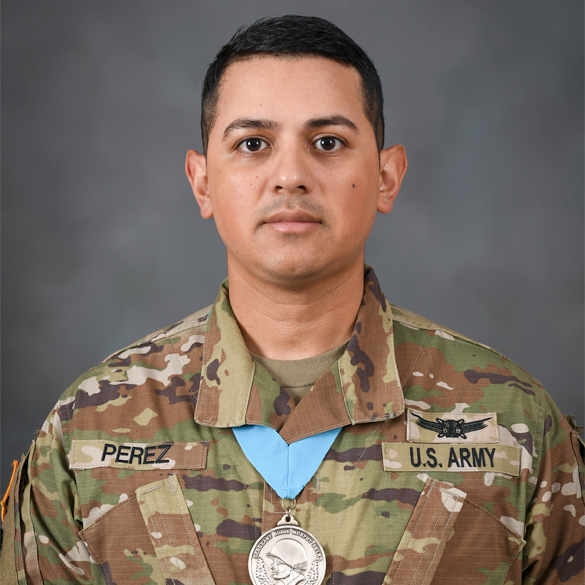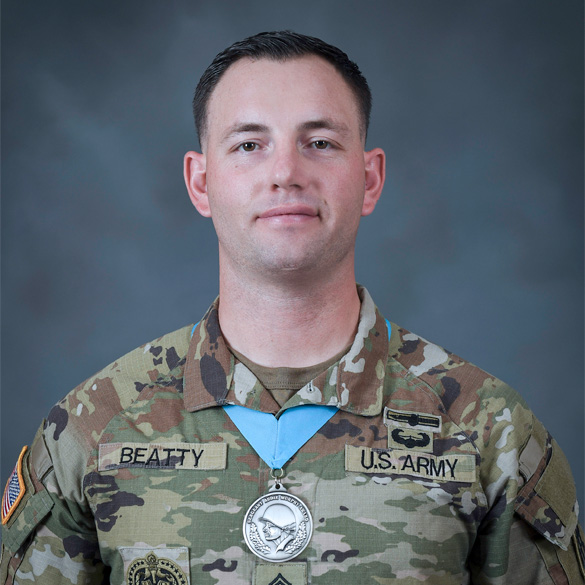Sgt. Audie Murphy Club (SAMC)








Welcome
Our club seeks to emulate and keep alive the memory of the leadership and courage of Audie Murphy, a Soldier who started World War II as a private, but ended the war as a captain and the most highly decorated Soldier in history. Murphy’s awards include the Medal of Honor – the highest award for courage that our country can award. Fort Sill Soldiers have been members of the Sgt. Audie Murphy Club since it was first conceived in 1986; however, at its inception, only members of the III Corps Artillery were considered for membership. The club was started by III Corps, so it initially was open to just III Corps members. Today, all Soldiers at Fort Sill are authorized for membership in this elite group of men and women.
The original club was started at Fort Hood, Texas in 1986. Leading the effort was Lt. Gen. Crosbie Saint, the III Corps commander; corps Command Sgt. Maj. George L. Horvath; Jean Crisp, awards clerk; and Don Moore, a Killeen artist who designed the logo and club awards. In 1991, the III Corps commander expanded the Fort Hood club to include all of III Corps. This included Fort Riley, Kan.; Fort Sill, Okla.; Fort Bliss, Texas; Fort Polk, La.; and Fort Carson, Colo. In 1993, the club went FORSCOM wide, including the Reserves and National Guard. In 1994, the Sergeant Audie Murphy Club spread to all Army commands.
Audie Leon Murphy was a legend in his own time: A war hero, movie actor, writer of country and western songs, and poet. His biography reads more like fiction than fact. He lived only 46 years, but he made a lasting imprint on American history. Audie was born on a sharecropper's farm in North Texas on June 20, 1924. As a boy, he chopped cotton for one dollar a day and was noted for his feats of derring-do and his accuracy with a gun. He had only 5 years of schooling and was orphaned at age 16. After being refused enlistment during World War II in both the Marines and paratroopers for being too small (5'5") and underweight (110 lbs), he enlisted in the Army a few days after his 18th birthday. After basic training at Camp Wolters, Texas, and advanced training at Fort George G. Meade, Md., Murphy was sent overseas. He was assigned to the 15th Infantry Regiment of the 3rd Infantry Division, and he fought in North Africa, Sicily, Italy, France and Germany. He earned a battlefield commission for his courage and leadership, and his citations and decorations included every medal for valor that America gives. He was awarded three French and one Belgian medal. Murphy was the highest decorated soldier in American history. Discharged from the Army on September 21, 1945, Murphy went to Hollywood at the invitation of movie star James Cagney. He was closely associated with the movie industry, both as an actor and a producer. He acted in 44 films, starring in 39 of them. His best known film was "To Hell and Back," adopted from the best-selling book of his war experiences of the same name. Most of his movies were westerns. In 1955, Audie Murphy was voted the Most Popular Western Actor in America by the Motion Picture Exhibitors. Audie wrote the lyrics to 16 country and western songs, the most popular of which was "Shutters and Boards," written with Scott Turner in 1962. The song was recorded by over 30 pop singers, including Jerry Wallace, Dean Martin, and Porter Waggoner. He was an accomplished poet; unfortunately, only a few of his poems have survived. In 1950, Audie joined the 36th Infantry Division ("T-Patchers") of the Texas National Guard and served with it until 1966. He was a Mason and a Shriner and belonged to several veterans organizations. Murphy was killed in a plane crash on a mountain near Roanoke, Va. on May 28, 1971. His body was recovered two days later on Memorial Day.
•Medal of Honor •Distinguished Service Cross •Silver Star with First Oak Leaf •Legion of Merit •Bronze Star Medal with "V" Device and First Oak Leaf Cluster •Purple Heart with Second Oak Leaf Cluster •U.S. Army Outstanding Civilian Service Medal •Good Conduct Medal •Distinguished Unit Emblem with First Oak Leaf Cluster •American Campaign Medal •European-African-Middle Eastern Campaign Medal with One Silver Star, Four Bronze Service Stars (representing nine campaigns) and one Bronze Arrowhead (representing assault landing at Sicily and Southern France) •World War II Victory Medal •Army of Occupation Medal with Germany Clasp •Armed Forces Reserve Medal •Combat Infantry Badge •Marksman Badge with Rifle Bar •Expert Badge with Bayonet Bar •French Fourragere in Colors of the Croix de Guerre •French Legion of Honor, Grade of Chevalier •French Croix de Guerre With Silver Star •French Croix de Guerre with Palm •Medal of Liberated France •Belgian Croix de Guerre 1940 Palm
 SSG Fredericksen, Molly
President
SSG Fredericksen, Molly
President
 CSM Devot, Steve
Vice President
CSM Devot, Steve
Vice President
 SSG Perez, Enrique
Secretery
SSG Perez, Enrique
Secretery
 SFC Beatty, Anthony
Treasurer
SFC Beatty, Anthony
Treasurer
 1SG Yucuis, Michael
PAO
1SG Yucuis, Michael
PAO